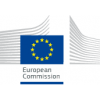Federated Healthcare Interoperability with Fast Healthcare Interoperability Resources (FHIR) for Intensive Care Units
il y a 2 ansI propose utilization of Fast Healthcare Interoperability Resources (FHIR) to address the data objectives outlined in the call. By leveraging the FHIR standard, the project will create a comprehensive ecosystem that supports data aggregation, analysis, collaboration, and innovation within the ICU domain while aligning with the broader European Health Data Space (EHDS) initiative.
Why FHIR is a Good Fit:
Fast Healthcare Interoperability Resources (FHIR) is a standardized data exchange framework developed by Health Level Seven International (HL7) that excels in ensuring seamless interoperability and secure data sharing in healthcare settings. Here's why FHIR is a great fit for the Federated European Infrastructure for intensive care units' (ICU) data project:
1. Interoperability: FHIR offers a well-defined and standardized approach to data representation and exchange. It supports the creation of APIs that enable various healthcare systems to communicate and share information, ensuring compatibility among different data sources, including ICU-related data from physiological monitors, laboratory tests, imaging, and more.
2. Data Aggregation: FHIR's resource-based model allows diverse data types to be represented uniformly, making it suitable for aggregating ICU datasets from various sources. It enables the integration of structured clinical data, images, genomic information, and more, creating a comprehensive view of patient health.
3. Standardized Data Models: FHIR provides predefined data models (resources) for various clinical concepts, such as patient demographics, observations, procedures, medications, and more. This standardization facilitates consistent data representation, enabling easy mapping and transformation of ICU-specific data into FHIR resources.
4. Privacy and Security: FHIR incorporates modern security practices and supports authorization mechanisms, ensuring that sensitive patient data is handled securely and compliant with privacy regulations like GDPR. This aligns with the project's goal of safeguarding patient privacy while enabling data sharing.
5. Ecosystem Integration: FHIR is designed to be extensible and compatible with existing healthcare IT systems. This aligns well with the project's aim to integrate with the European Health Data Space (EHDS), as well as other federated European data infrastructures for genomics and cancer imaging.
6. Clinical Decision Support and AI: FHIR supports the integration of clinical decision support tools and AI algorithms into the healthcare workflow. This enables the development of tools for individual patient pathophysiology simulation, predictive modeling, and risk assessment, which are crucial components of the project's objectives.
7. Multi-language Support: FHIR has been designed to support multilingual healthcare systems, aligning with the project's requirement for a User Interface front-end module or system operational in multiple EU languages.
8. Compliance with EHDS and Standards: FHIR's flexibility and alignment with international standards make it a strong candidate for creating a harmonized approach to data exchange that complements EHDS and other European initiatives.
In conclusion, Federated European Infrastructure for intensive care units' (ICU) utilization of the FHIR standard will enable the creation of a robust and scalable infrastructure for ICU data sharing, analysis, and innovation, meeting the objectives set forth in the Up2Europe project call while ensuring the security, privacy, and interoperability of critical healthcare information.
I am happy to assist with FHIR expertise, FHIR/SNOMED data mapping and general healthcare infromatics experience as part of the project.
Soins de santé
E-health
IT
Applications informatiques
Accédez au prémier réseau pour la cooperation européenne
Se connecter
ou
Créer un compte
Pour accéder à toutes les informations disponibles
Appels recommandés pour cette idée
Appels proposés par les utilisateurs qui pourraient coller avec cette idée.
Recommander un appel







S'il vous plaît Se connecter pour voir cette section